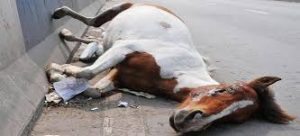Glanders Disease : Action Plan

The Department of Animal Husbandry & Dairying (DAHD) under the Ministry of Fisheries, Animal Husbandry & Dairying has issued the Revised National Action Plan on Glanders.
- Glanders is caused by the bacterium Burkholderia mallei.
- It primarily affects equines such as horses, mules, and donkeys, and poses risks to other animals as well as humans.
- The disease causes nodules and ulcerations in the respiratory tract and lungs in animals. A skin form, known as ‘farcy’, also occurs.
- Glanders is commonly contracted via the following routes:
- Ingestion of food or water contaminated with nasal discharge from infected (carrier) animals
- Contact with contaminated harness components
- Ingestion of infected horse meat
- Glanders has traditionally been clinically categorized into nasal, pulmonary and cutaneous forms based on the most commonly affected organ systems in equines.
- It remains sporadically reported in a number of Asian, African, Middle Eastern, and South American countries.
- Glanders is an WOAH-listed disease as described in the Terrestrial Animal Health Code of the World Organisation for Animal Health (WOAH). As indicated in the WOAH Terrestrial Animal Health Code any occurrence of glanders must be notified to the WOAH.
- The disease is notifiable under the Prevention and Control of Infectious and Contagious Diseases in Animals (PCICDA) Act, 2009.
- Revised National Action Plan Rolled Out to Eradicate Glanders; Govt Steps Up Equine Disease Control Measures




